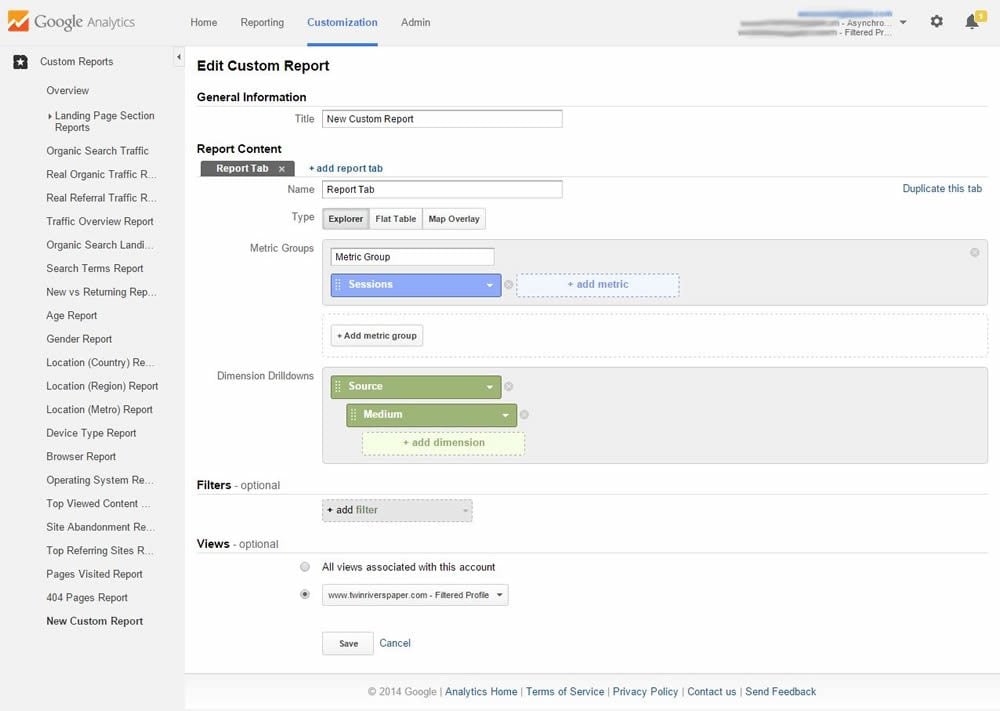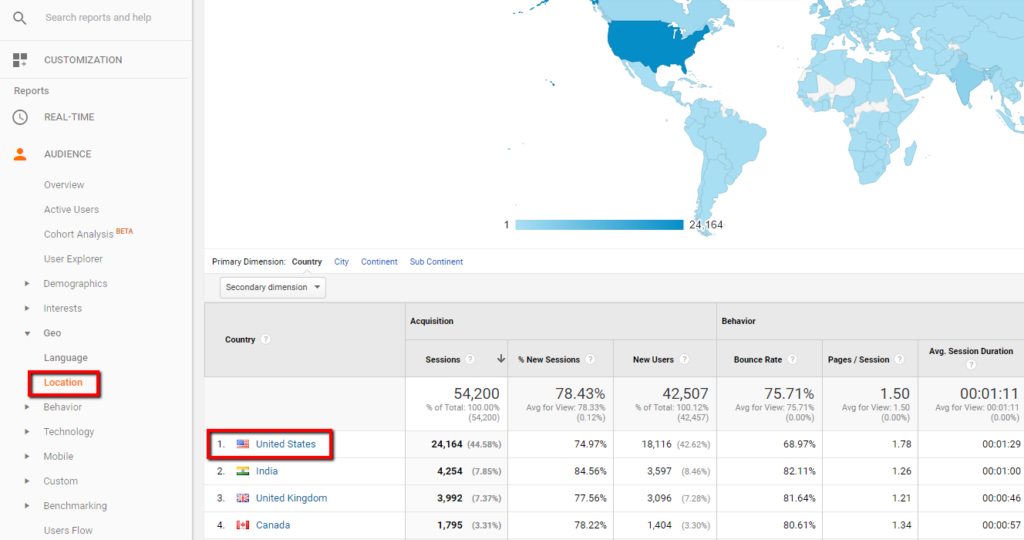Unveiling the Intricacies of Second Measurement in Google Analytics: a Comprehensive Guide on Exactly How It Functions
Browsing the detailed world of secondary dimensions in Google Analytics is a task that calls for an eager understanding of how this attribute operates within the platform. As electronic landscapes develop and data comes to be increasingly essential for decision-making, comprehending the nuances of secondary dimensions can be the trick to opening valuable insights. From setting up reports to delving right into advanced methods, the trip to harnessing the power of secondary dimensions is both difficult and gratifying. Join us as we check out the ins and outs of this device and uncover how it can transform your data analysis strategies.
Fundamentals of Additional Dimension in Google Analytics
When analyzing information in Google Analytics, utilizing the second dimension attribute gives valuable understandings right into the performance of numerous metrics. The second measurement allows individuals to even more explore their information by including an added layer of details to their main measurements. By doing so, experts can gain an extra thorough understanding of the factors affecting their site's efficiency.
In Google Analytics, the main dimensions represent the main groups of information, such as traffic sources or tools. When a secondary dimension is applied, it gives a much deeper degree of granularity by revealing another element of the data within the selected primary dimension. If the main dimension is 'Web traffic Source,' adding a second measurement like 'Touchdown Web page' can reveal which specific pages are driving web traffic from each source.
This attribute is particularly beneficial for recognizing patterns, connections, and trends that might not be right away apparent when taking a look at the data from a solitary dimension. By leveraging the second dimension in Google Analytics, individuals can reveal useful insights that can inform tactical decisions and optimizations to boost website efficiency.
Establishing Second Dimension Reports
Expanding on the insights obtained with the usage of second dimensions in Google Analytics, the procedure of establishing secondary dimension records includes setting up added layers of information to additionally enhance the depth of analysis (what is a “secondary dimension” in google analytics?). To launch this arrangement, individuals can navigate to the coverage section in Google Analytics and select the key record they desire to dig deeper into. When the primary report is selected, users can click on the "Second dimension" tab situated over the data visualization location. From there, a drop-down menu will show up, providing a wide variety of alternatives to pick the second dimension that ideal complements the primary data set. Users can pick from a large range of second measurement metrics such as behavior, modern technology, website traffic resources, and more to acquire a much more extensive understanding of customer communications on their site. By incorporating secondary and main measurements, services can remove richer understandings and make more informed decisions to maximize their on the internet visibility successfully.
Leveraging Second Measurements for Insights
Using additional measurements in Google Analytics supplies a calculated approach to drawing out nuanced understandings for informed decision-making in on-line business optimization. By integrating primary dimensions with secondary measurements, services can dig deeper into their information to uncover important relationships and patterns that may not be promptly apparent. By segmenting website web traffic by geographical place (main dimension) and after that including a second dimension like device category, services can recognize if specific regions favor accessing the site via mobile or desktop.
Moreover, leveraging additional dimensions enables organizations to get a much better understanding of user behavior and choices. Examining conversion prices based on web traffic sources (key measurement) along with the secondary dimension of landing pages can expose which details pages are most effective in driving conversions pop over to this web-site for natural search web traffic versus social media traffic. These understandings can then notify marketing techniques and site optimization initiatives to improve total performance and make the most of ROI.
Advanced Techniques for Second Dimensions
To further draw out detailed understandings and enhance data-driven decision-making within Google Analytics, carrying out advanced techniques for using second measurements is important in unlocking much deeper layers of useful details for organization optimization. One innovative strategy is the usage of custom-made dimensions and metrics, enabling for the tracking of particular individual communications or behaviors that are not caught by default in Google Analytics. By defining and applying personalized dimensions, companies can tailor their tracking to align with distinct organization objectives and purposes.
One more innovative technique involves using filters in combination with additional dimensions. Filters enable individuals to refine the data presented in Google Analytics reports, giving more targeted and pertinent understandings. By applying filters purposefully with additional measurements, businesses can segment data extra efficiently, resulting in a clearer understanding of individual actions and efficiency metrics.

Optimizing Data Evaluation With Second Dimensions

In addition, enhancing data analysis with second dimensions involves try out various combinations to recognize patterns and connections that might not be immediately apparent. This iterative strategy enables experts to adjust their reporting and focus on the most pertinent data points for their service objectives. Ultimately, by leveraging secondary dimensions efficiently, analysts can boost the accuracy and performance of their information evaluation initiatives in Google Analytics.
Final Thought
To conclude, recognizing the complexities of additional measurements in Google Analytics is crucial for acquiring much deeper insights into website efficiency. By establishing second dimension reports, leveraging them for understandings, and making use of innovative techniques, analysts can maximize data evaluation and make informed choices. This thorough guide has given a comprehensive overview of how secondary measurements work and their relevance in enhancing learn this here now the analytical abilities of Google Analytics customers.
The second dimension enables users to even more dissect their information by including an additional layer of info to their key dimensions. When a secondary dimension is used, it supplies a much deeper degree of granularity by revealing another facet of the data within the chosen key measurement.Expanding on the understandings got via the use of second dimensions in Google Analytics, the procedure of setting up secondary dimension reports involves setting up added layers of data to better improve the depth of evaluation. By integrating key dimensions with additional dimensions, organizations can dive deeper into their information to uncover important relationships and patterns that might not be immediately evident. One method to maximize data evaluation with second dimensions is to combine them with key dimensions to get a more thorough sight of internet site efficiency.